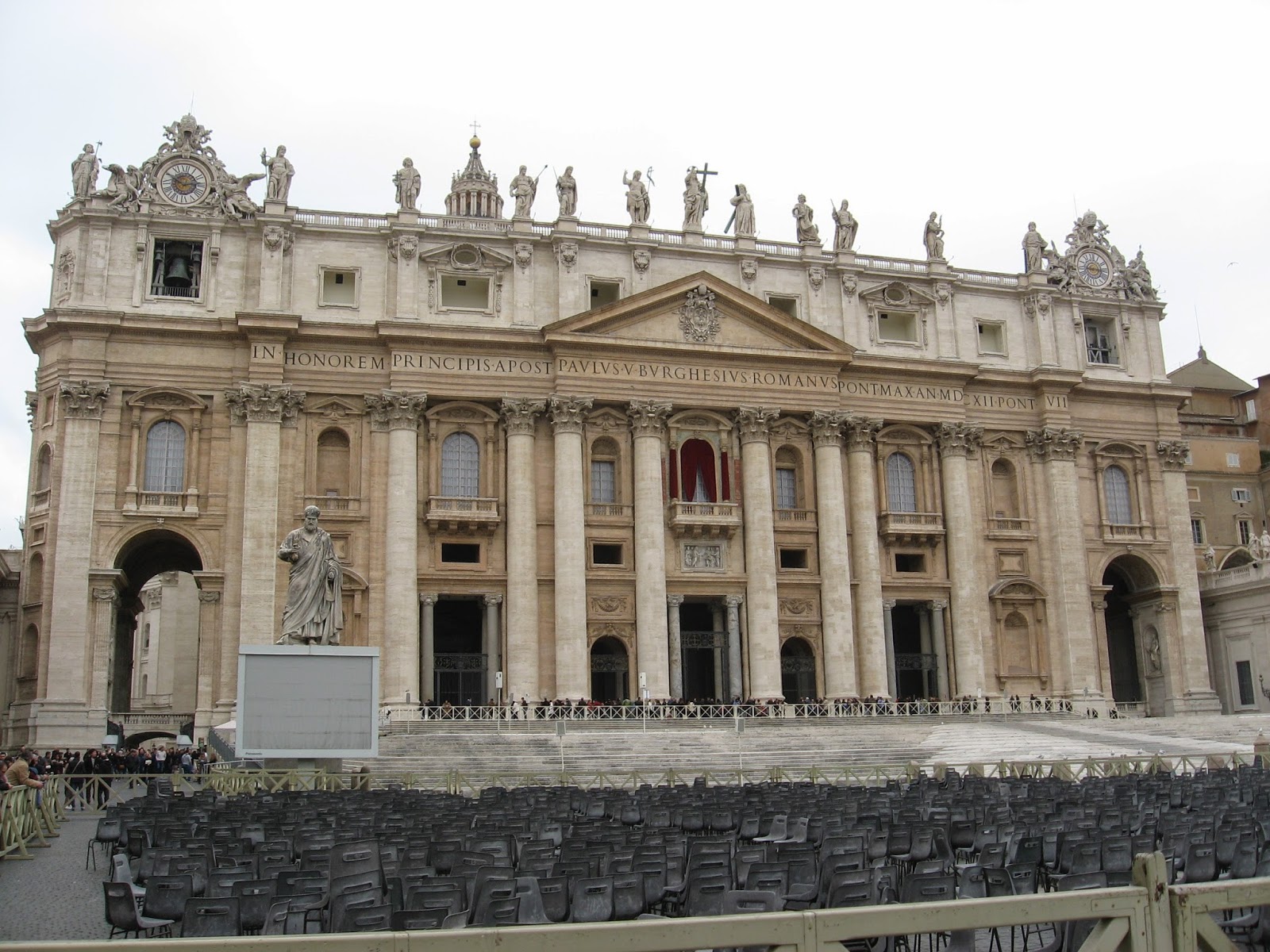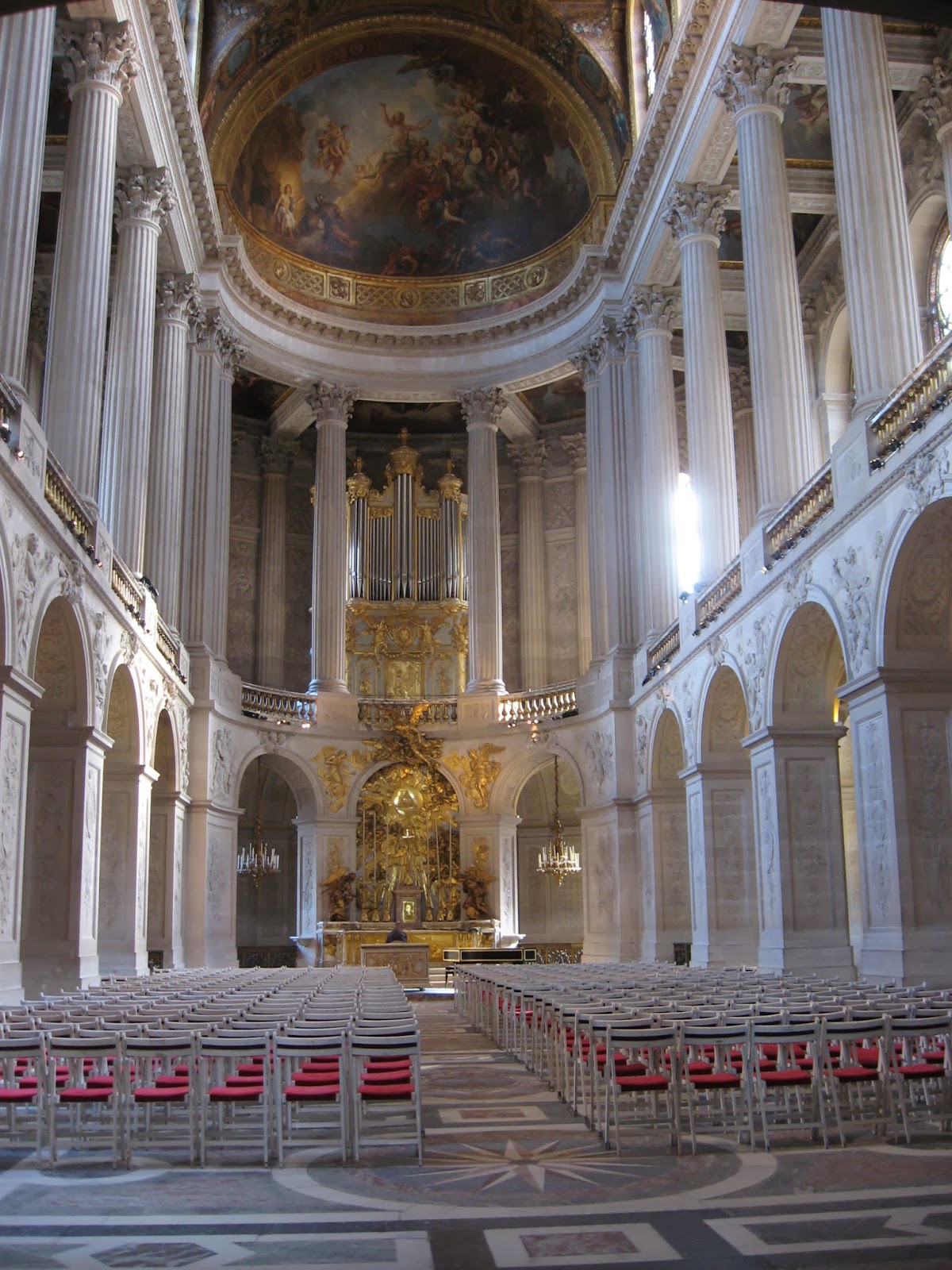Welcome back for this last instalment of my Roman adventures!
 |
| Even Father Carlo loved the bowler! |
 |
| Great Synagogue of Rome |
On Friday Ben and I met a family friend of his in the Jewish quarter for a guided tour and a kosher lunch. Father Carlo, as Ben affectionately calls him, served in the US military with Ben's father and is now working in the Vatican for a few years. Thus, he insisted on showing us some of the sites. Before lunch, Father Carlo took us into a church that had been constructed using the remaining ruins of a previous pagan temple. In fact, this is quite commonplace around Rome - newer structures built from ancient ones - and quite interesting to see the fusion of architecture .... form vs. function .... oh boy, there's my high school English surfacing! In any case, the layers of history in this city was simply astounding - thousands of years of history occupying the same space.
 |
| St Peter's Square |
 |
| St Peter's Basilica (front) |
Father Carlo wanted to meet us in Rome's Jewish quarter so he could treat us to Kosher cuisine for lunch. Not only did we eat at the cleverly named Ba'Ghetto (literally, "in the ghetto" - this Jewish section used to be walled in; its massive stone gate still stands today), but the food was delicious and never-ending! Father Carlo insisted on more wine than we anticipated at one o'clock in the afternoon, but it only lent to the festiveness; after all, it is quite impossible to dine in Italy without a glass of spirit. And, I should say, Father Carlo is one of the nicest, happiest, and well-meaning people you could ever meet; his perpetual smile says it all. AND, if great company with excellent food weren't enough, it only got better ... when the check arrived, Father Carlo reached for his Bank of America card, and after a moment of hesitation, he slid the card back into his wallet and reached for another. He looked up, across the table and stated, resolutely and with a twinkle of mischief, "you know what, I believe lunch will be on the Church today!" With that, he slapped down his Vatican credit card and paid for our Kosher meal!
Now properly fueled and ready to go, Father Carlo walked with us to Vatican City, all the while telling us random factoids about Rome (the city and its culture) or the Church as he thought of them. We parted ways in high spirits and I truly believe I am a better human being for having met him! It is rare to meet such a free soul.
 |
| Grounds |
Because we arrived later in the afternoon, there was already a huge line to get into St Peter's Basilica, so we admired it from the outside, and headed, instead, for the Sistine Chapel. (Rather, Ben knew that that is what I really wanted to see!). The Basilica will have to wait until my next visit to Rome. It was a long walk around the perimeter of Vatican City, but we eventually made it. The Sistine Chapel was enormously spectacular! It was much larger that I originally pictured in my mind, which makes no sense because I wrote a short essay on Michelangelo's work in the Chapel a few semesters ago ... the ceiling is actually 68 feet tall and the nave 134 feet long; and of the seven years Michelangelo spent on the entire Chapel (1505-1512), four were devoted to the ceiling, during which he laid supine on tall scaffolding while he painted (there is actually much debate over whether or not he stood up or laid flat, but what's the point? It is amazing, regardless)! This was just as well because he did not get along with the cardinals or other Church officials (did not get along, by the way, is quite the understatement) - he was often drunk and/or loud while he worked, which was not always during regular hours. This probably accounts for why he wasn't paid very much for his work ... needless to say, there is no money today that can afford his work.
 |
| Flight home over the Alps |
Despite the millions of people crammed into the Chapel, seeing Michelangelo's work in person was incredible! This was my primary reason for adding Rome to our European itinerary - there is nothing like the skill of human hands ... and, as an anatomy/physiology freak, I appreciate it that much more! Unfortunately, no pictures were allowed inside, but I did get some great shots outside on the grounds.
Sunday was our day of departure and marked the conclusion of my first trip to Europe. From the Thames river tour to Liverpool, Edinburgh, Hull, Amsterdam, Paris, Florence, and Rome, I had an amazing experience and thoroughly enjoyed spewing as much history as I could on this blog! So, thank you, dear readers, for reading!
Most affectionately,
Adena












































